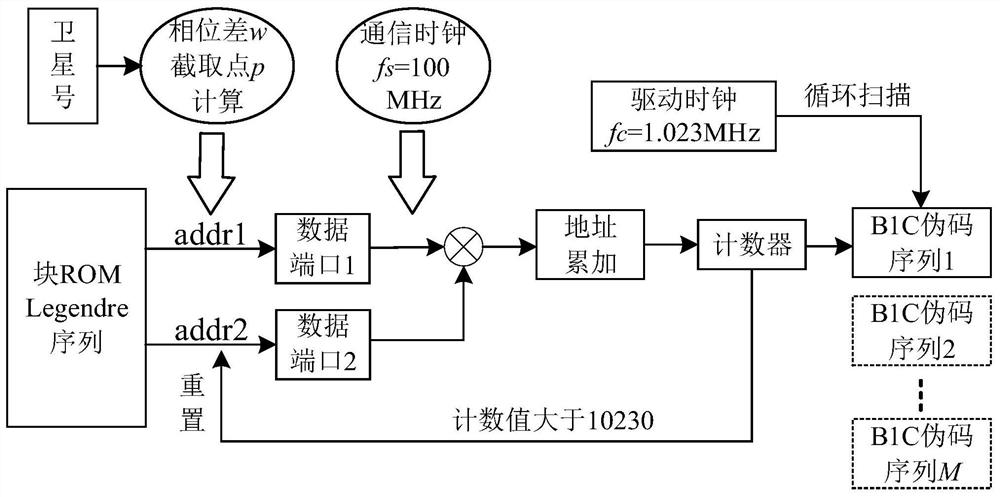Hardware implementation method for generating B1C signal pseudorandom noise code
A pseudo-random noise code, hardware implementation technology, applied in satellite radio beacon positioning systems, measuring devices, instruments, etc., can solve the problems of large amount of calculation, many hardware resources, etc., to improve the output speed, simplify the circuit structure, save energy The effect of hardware resources
- Summary
- Abstract
- Description
- Claims
- Application Information
AI Technical Summary
Problems solved by technology
Method used
Image
Examples
specific Embodiment approach
[0038] (1) In order to save the memory space when multi-channel B1C pseudo-code output, a hardware circuit based on B1C pseudo-random noise code output shared by block ROM is designed.
[0039] (2) In order to improve the computation and output speed of Legendre sequence, a block memory-based sequence output method is designed.
[0040] (3) Using timing logic and algorithm, a multi-channel time-division multiplexing scheme of block memory in FPGA is proposed to realize the multi-channel output method of sequence.
[0041] Embodiments of the invention are described below:
[0042] Describe the multi-channel output embodiment of the B1C signal pseudocode sequence of the present invention. Generate a .coe format file storing 10243 Legendre sequences through MATLAB, load it into the Block Memory IP core in the VIVADO integrated development environment, and set it as the ROM memory of the dual-channel output port, and set the number of channels M to 25. Sampling clock frequency f...
PUM
 Login to View More
Login to View More Abstract
Description
Claims
Application Information
 Login to View More
Login to View More - R&D
- Intellectual Property
- Life Sciences
- Materials
- Tech Scout
- Unparalleled Data Quality
- Higher Quality Content
- 60% Fewer Hallucinations
Browse by: Latest US Patents, China's latest patents, Technical Efficacy Thesaurus, Application Domain, Technology Topic, Popular Technical Reports.
© 2025 PatSnap. All rights reserved.Legal|Privacy policy|Modern Slavery Act Transparency Statement|Sitemap|About US| Contact US: help@patsnap.com



